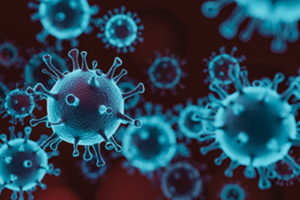Dear Colleagues and Friends,
To win the fight against COVID-19, we need to know as much as possible about the disease and how it proliferates through communities. That’s why UWM’s world-class researchers are focusing their expertise on gathering data and devising possible solutions to slow its spread. In the accompanying story, you’ll learn about three of the many efforts underway at UWM. By combining their discoveries with those of so many other dedicated researchers, we continue to give our health care workers and policymakers important tools that will help save lives. It’s one more example of how UWM continues to be one of America’s top research universities.
Best Regards,
Mark A. Mone, PhD
Chancellor
University of Wisconsin-Milwaukee
Locating COVID-19 hot spots, examining disproportionate impacts on African Americans, and creating a protective spray
 UWM researchers continue exploring ways to learn more about the COVID-19 outbreak and assist the response to it. Among their many projects, they are undertaking a novel way to locate hot spots, tracking COVID-19’s disproportionate effects on the African American community and developing a spray that could protect surfaces from contamination.
UWM researchers continue exploring ways to learn more about the COVID-19 outbreak and assist the response to it. Among their many projects, they are undertaking a novel way to locate hot spots, tracking COVID-19’s disproportionate effects on the African American community and developing a spray that could protect surfaces from contamination.
Konstantin Sobolev, a professor of engineering, leads the team of researchers that’s creating the protective spray for surfaces. Its coating repels and deactivates the virus-laden droplets that are spread when people with COVID-19 speak, cough or sneeze.
In addition to repelling moisture, the coating will destroy microscopic pathogens through a chemical reaction initiated by ultraviolet light that comes from the sun’s rays or artificial light. Sobolev also says the project will gather data on how surfaces attract pathogens.
Also, School of Freshwater Sciences researchers are working with the Milwaukee Metropolitan Sewerage District to learn more about COVID-19 by collecting and analyzing wastewater samples. Professor Sandra McLellan says that tracking virus concentrations in real-time samples from a community’s wastewater treatment plant can reveal whether the illness in that population is increasing or declining.
McLellan and Ryan Newton, an assistant professor of freshwater sciences, hope to expand the monitoring throughout the state. Such monitoring can provide early warnings of viral hot spots that are developing, which could be particularly useful as social distancing measures are relaxed.
Another UWM project examined COVID-19’s early spread in the Milwaukee area. The study, conducted by the UWM Center for Economic Development, showed that Milwaukee County’s African American residents were far more affected by the disease.
Joel Rast, the center’s director, and his team analyzed statistics from the Milwaukee County Health Department and the U.S. Census Bureau. They found that COVID-19 incidences and deaths were concentrated in neighborhoods where most residents are African American. The study found that while 13% of the county’s population lives in census tracts that are at least 75% African American, those tracts accounted for 26% of confirmed coronavirus cases as of April 8.
